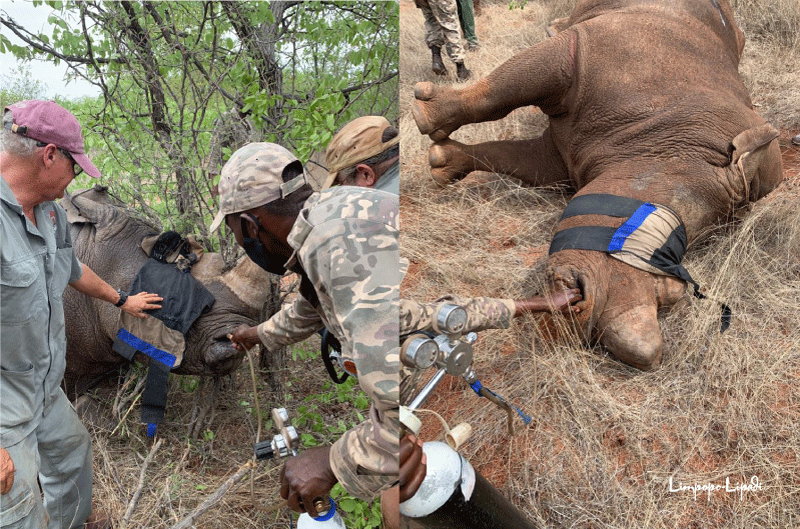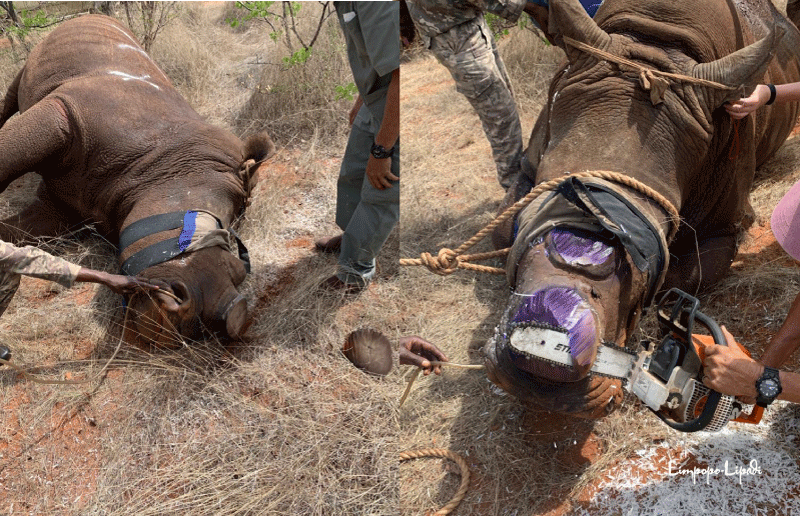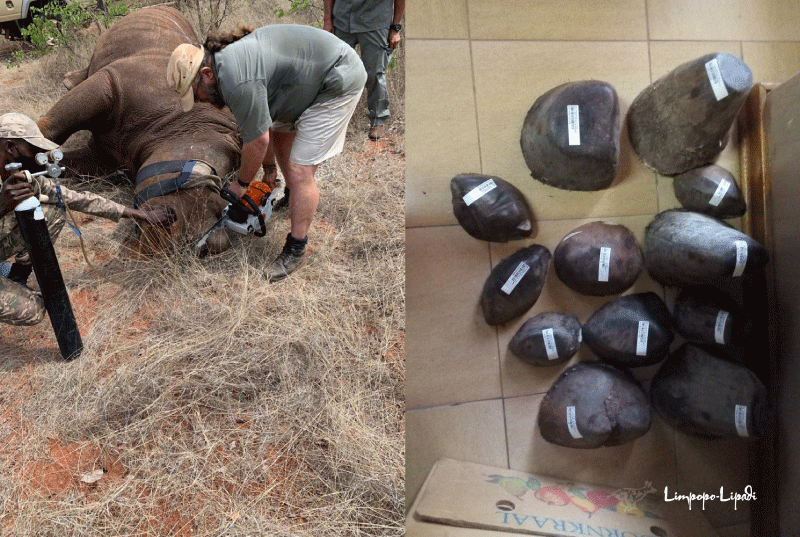Limpopo-Lipadi’s operations manager, Duane, the anti-poaching unit, and our veterinarian, Dr Erik Verreynne, performed a white rhino de-horning operation late November 2020. During this exercise, six rhino were captured, dehorned, microchipped, and ear notches confirmed. Subsequently, all the horns that were removed were registered, microchipped, and handed over to the DWNP for safekeeping.
Dehorning of rhino has become a top poaching mitigation method over the years and is now required by law for all rhino living in Botswana. In a reasonably simple procedure, the rhino is captured, using a tranquilliser dart, and once stabilised, the horns are removed with a chainsaw. All in all, the procedure takes about half an hour per rhino to complete.

Generally, there are mixed feelings among the public about dehorning of rhino. Some people feel that a rhino is not quite a rhino without its horn. Others believe that rhinos are less able to defend themselves once their horns have been removed. Both of these assumptions are incorrect. Rhino remains rhino, with or without their horn, and even with the horn removed, the rhino remains a formidable opponent.

As we all know, there is no silver bullet when it comes to poaching mitigation. Various measures are needed to keep rhino safe. We have found that dehorning (as a blanket method), coupled with good media publicity, making it well known that the rhinos in a region or reserve have been dehorned, along with strong APU (anti-poaching unit) protection, are the best precautions against poaching. All poaching is bound to a “risk vs reward” scenario. The intention is to make it as difficult as possible for the poacher to get rewarded for their efforts. The risk is overwhelming for a poacher when the reward is only a sliver of the horn, while the risk is potential capture, or even death to obtain that small piece of horn. It is just not worth it.

Several other methods have been tried in the past—from “demand reduction” campaigning, to devaluation of rhino horn through public burning (as in Kenya), to infusion of chemicals, under pressure, into the horn. Demand Reduction has been an abject failure, as it has been ongoing for more than 40 years, and demand has never been higher than it is now. Millions of dollars have been thrown at Demand Reduction campaigning during that time, and it has basically achieved nothing. Burning of horns, and ivory, might once have captured people’s attention and imaginations, but now it is considered a waste. Devaluation of horns through infusion with chemicals have been debunked and have since been described as an “unnecessary deception”.
If you would like to read more, here are links to an opinion piece and an academic study on this subject:
https://www.researchgate.net/publication/285957596_Chemical_horn_infusions_A_poaching_deterrent_or_an_unnecessary_deception
https://annamiticus.com/2014/09/07/rhino-horn-infusion-claims-scrutiny-south-africa/
Our objective is to keep our rhino safe, healthy and alive. By dehorning these animals, we are doing exactly that. After all, it is better to have a rhino without a horn, than to have no rhinos at all.
